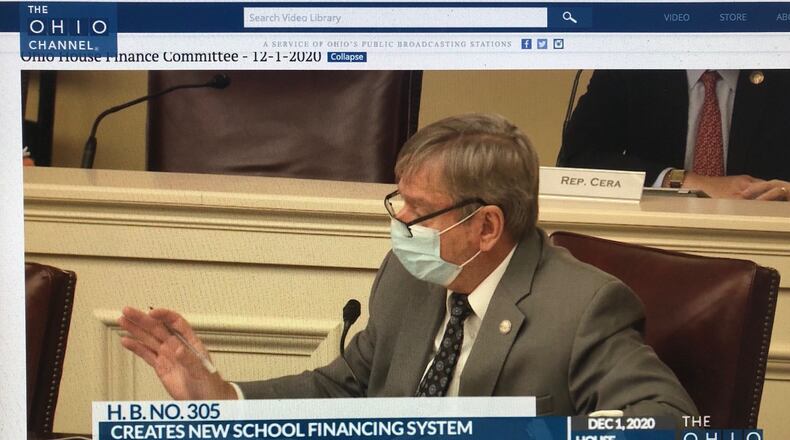The plan, if fully funded, calls for a $2 billion per year increase in state funding for Ohio schools, phased in over six years — a big request given COVID-19′s impact on the state budget.
The $2 billion increase estimate came from over two years of research by a bipartisan team of politicians, educators and others, trying to establish a base cost to educate an Ohio student. They calculated staffing ratios for teachers and other school personnel, as well as allocations for technology support, busing, supplies and other needs.
This week, state Sen. Louis Blessing, R-Cincinnati, sent a letter to legislators suggesting the real cost of the plan might be a $3.5 billion increase per year because of certain teacher compensation issues that hadn’t been included.
That issue was discussed late Tuesday in the Senate Finance Committee. According to Gongwer News Service, Akron City Schools Treasurer Ryan Pendleton, a member of the work group that developed the bill, called Blessing’s estimates inaccurate. Pendleton said teachers funded with federal money or local discretionary funds are not the state’s responsibility and wouldn’t be funded via this bill, according to Gongwer.
One of the big changes in HB 305 is that it would calculate each school district’s local funding share based on a community’s property wealth (60%) and the income levels of its residents (40%).
That change aims to address the decades-old court rulings that found Ohio’s school funding model unconstitutional due to inequities from its overreliance on local property taxes.
Economist and veteran school funding analyst Howard Fleeter said Wednesday that the new plan, when fully funded, meets Ohio constitutional requirements, providing both adequate and equitable funding. In recent years the state has used a patchwork of confusing caps and guarantees that don’t match the formula for about 80% of schools.
Education groups representing teachers, school boards, superintendents and others have voiced support for the bill. But Scott DiMauro, president of the Ohio Education Association, said it’s only a first step.
“A formula without funding doesn’t do a lot of good,” DiMauro said. “It will be incumbent on the General Assembly to make sure the dollars are there so the promise of HB 305 can be fulfilled.”
If the bill does not pass the House and Senate before the end of December, the process will have to start over with the new legislature in January.
About the Author

